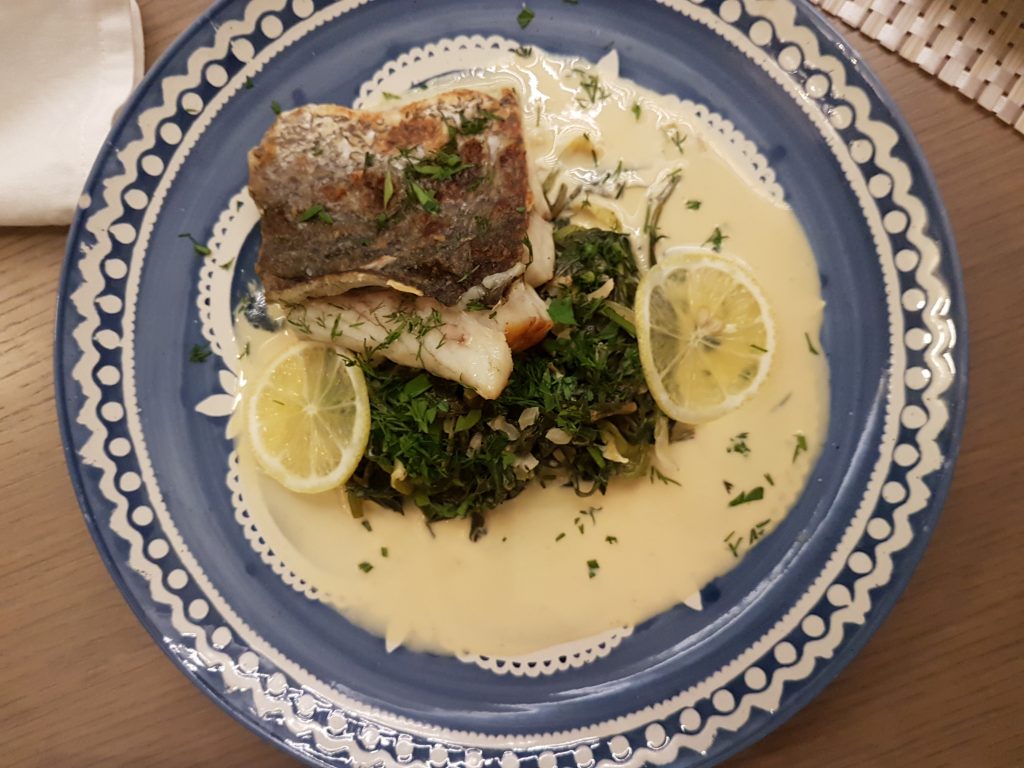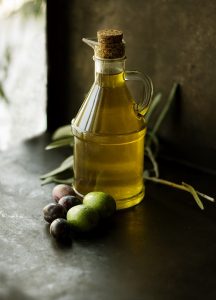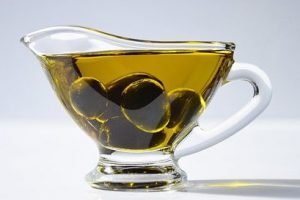There is a lot to say on the health benefits of the Mediterranean diet. Cretan olive oil is among the best on the planet. Cretans consume a lot of it, along with lots of homegrown fruits and vegetables. The island’s unique biodiversity and special climatic conditions make it ideal for agriculture and myriad native wild herbs and greens. For example, there are the horta, edible greens (lapatha, seskoula, kafkalithres, mironia etc.), which make for scrumptious pies (hortopitakia). According to scientific studies also have an exceptionally high nutritional value, with plenty of micronutrients (i.e. vitamins and minerals).
Healthy diet

Locally sourced ingredients, unfussy cooking, and generations of time-tested culinary traditions add up to the healthiest of all the Mediterranean diets. According to Stefanos Pertsemlides, a leading Greek nutritionist, “the Cretan diet doesn’t differentiate much from the Greek/Mediterranean diet. In fact, the term ‘Mediterranean diet’ is based on the Cretan diet of the early 1950s. A very important study revealed the Cretan diet is a protective factor against cancer and cardiovascular diseases.” He adds that what differentiates Cretan cooking from that of the rest of Greece is that “most of the other areas in Greece do not have the variety of ingredients that Crete has. This is quite unique—especially for an island.”
Olive Oil

A vast and varied coastline, largely untouched mountain ranges and fertile plains too, provide a solid backdrop for Crete’s agricultural bounty, of which olive oil has played a central role stretching back 3,500 years. Minoan palace ruins at Zakros even feature olive harvest frescoes! With 35 million olive trees, Crete produces a third of all the olive oil in Greece and ninety percent of it is extra virgin. This is a land with rugged contours and good soil. Consequently, it’s no wonder that some 18 Cretan agricultural products and at least a dozen wines have been awarded PDO (Protected Designation of Origin) and PGI (Protected Geographical Indication) status. As Pertsemlides points out, “Crete has such a variety of high-quality ingredients (meat, fish, vegetables, olive oil, fruits, and herbs) that there is no need to import.”
Cretan Cuisine

Anogia, Mitato Xilouri
The cuisine and fresh food traditions of Crete are both distinct from and yet form an integral part of the whole Greek gastronomic picture. “As in most areas of Greece, the Cretan diet has specific characteristics,” Perstemlides says, “such as the wedding food gamopilafo, (the wedding risotto) or the traditional antikristo (“across the fire”) method of cooking lamb and goat meat.” And whether it is at Legacy Gastro Suites’ casual-gourmet EL43 or in the comfort of your suite, what you’ll taste here is truly a mosaic of Greek and Cretan foods and flavors. With that in mind, here is a short primer on some food items familiar in Crete:
Cretan honey is the product of bees collecting nectar from pine and acacia trees, as well as herbs like thyme, ironwort (Cretan mountain tea), oregano, sage, and heather. In addition to its many uses in the Cretan kitchen, honey has medicinal properties as well as natural remedies.
Other edible Cretan wild herbs include dittany, sage, and pennyroyal. Why not try some of Crete’s organic baby artichokes and askordoulaki (tassel hyacinth bulbs)? They are pickled in olive oil, salt, and vinegar mixture. Locals serve it as meze (small plates) to accompany raki.
Local recipes
Kapriko is slow-roasted pork with delectably crispy skin, while apaki and siglino are gourmet smoke-cured cuts of pork. Skioufikta is a tube-shaped pasta, cooked in a meat broth, topped with grated dry anthotyro cheese. Another Cretan pasta, Xinohondros made of chopped tomatoes and soft farm cheese drizzled with extra virgin olive oil. A less common kind of rusk, eftazima, is cracked bulgur wheat and fermented milk. Zucchini flowers stuffed with rice and herbs are called anthi and are quite popular.
The cheese spread called Xygalo is made from goat’s and/or sheep’s milk, is low in fat and is a bit sour to the taste. Speaking of Cretan cheeses, they often find their way into traditional pie recipes that can be sweet or savory (salted); you’ll see names for these like kaltsounia, mizithra, sfakianes, lichnarakia, and others. Cretan graviera and three other kinds of cheese have been awarded PDO designation.
The traditional hard Cretan bread rusks, made from barley and called dakos, are served as an appetizer. Snails, or hohli, are a much-treasured Cretan delicacy and you taste them fried up with vinegar and rosemary (a dish called boubouristi) you’ll understand why for yourself.
Cretans also like to nibble on dried figs, carob, and currants, all both healthy and tasty, and exported in significant quantities. And let’s not forget about organically grown fruits like oranges, grapes, apples from the Lassithi Plateau, sweet cherries from Gerakari and bananas from Arvi. And then, of course, we could talk about Crete’s amazing wines … some of which we definitely recommend you try during your stay at Legacy Gastro Suites!
Author Anthoine de Grand















 To spend a wonderful Christmas Eve, nothing better than a festive table in the company of our loved ones. Make it a romantic Christmas dinner for two, in the most refined environment, such as our Brillant,
To spend a wonderful Christmas Eve, nothing better than a festive table in the company of our loved ones. Make it a romantic Christmas dinner for two, in the most refined environment, such as our Brillant, 





 According to archaeologists, the true origins of the
According to archaeologists, the true origins of the  Olive trees are such precious trees that they naturally turned into an icon. In Ancient Greece, it was common to make offerings of olives to the Gods. Also, a wreath of olive twigs was a present for athletes competing in the Olympic Games.
Olive trees are such precious trees that they naturally turned into an icon. In Ancient Greece, it was common to make offerings of olives to the Gods. Also, a wreath of olive twigs was a present for athletes competing in the Olympic Games. A superior quality and excellent organoleptic properties grant an unparalleled taste and aroma. These have further increased Greek exports thanks to the increasing importance of the
A superior quality and excellent organoleptic properties grant an unparalleled taste and aroma. These have further increased Greek exports thanks to the increasing importance of the  Olive oil is not just another ingredient of the island’s diet. It is probably one of the most important elements of the local culture. Cretans consume olive oil in any possible way. They pour it on toasted bread for a snack, but also fry, cook, roast, and to condiment
Olive oil is not just another ingredient of the island’s diet. It is probably one of the most important elements of the local culture. Cretans consume olive oil in any possible way. They pour it on toasted bread for a snack, but also fry, cook, roast, and to condiment  High-quality extra virgin olive oil is present in the kitchens of local hotels such as
High-quality extra virgin olive oil is present in the kitchens of local hotels such as